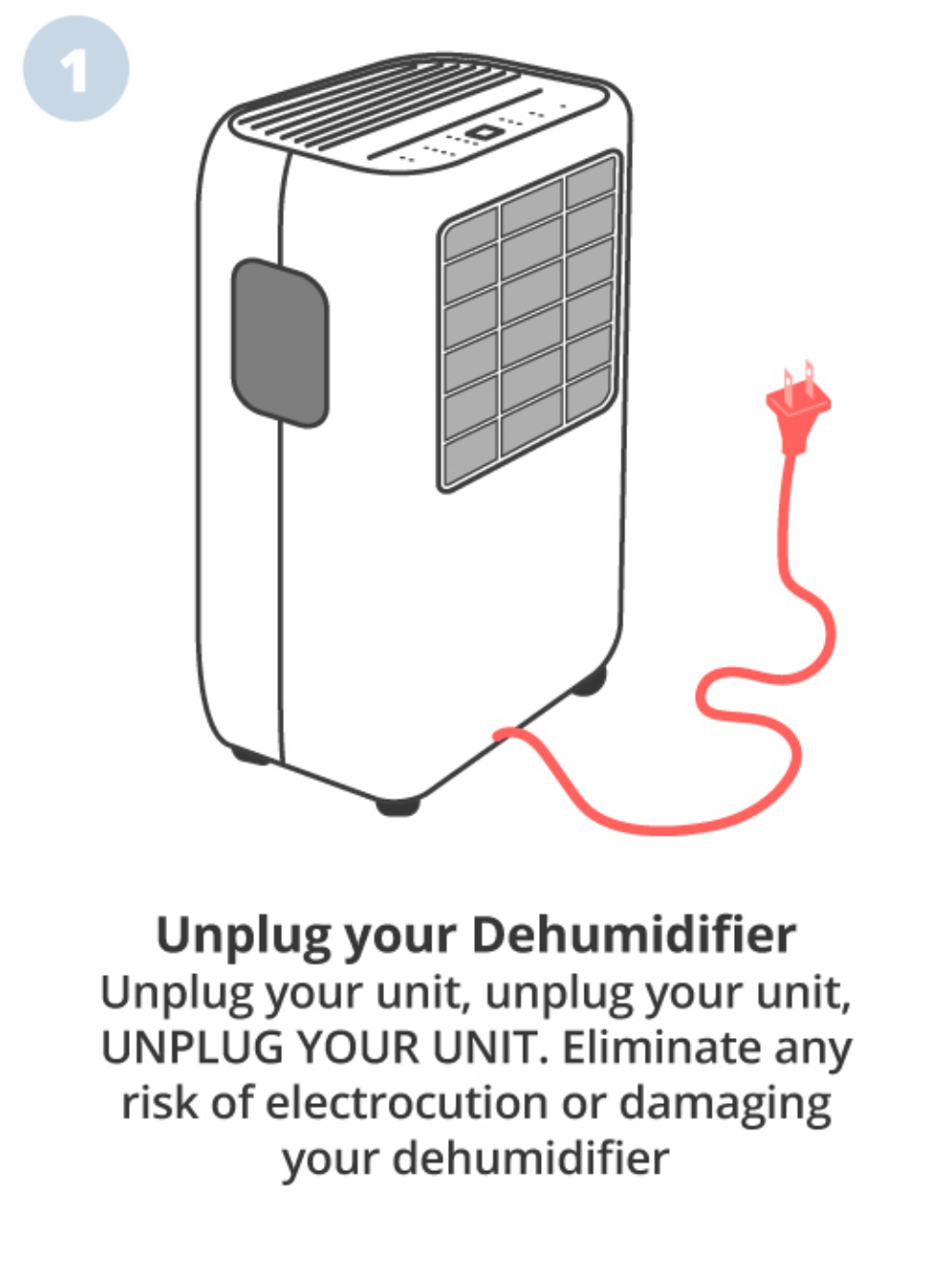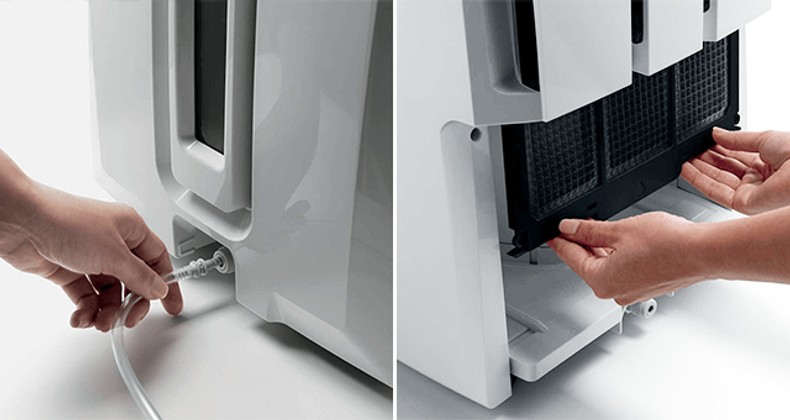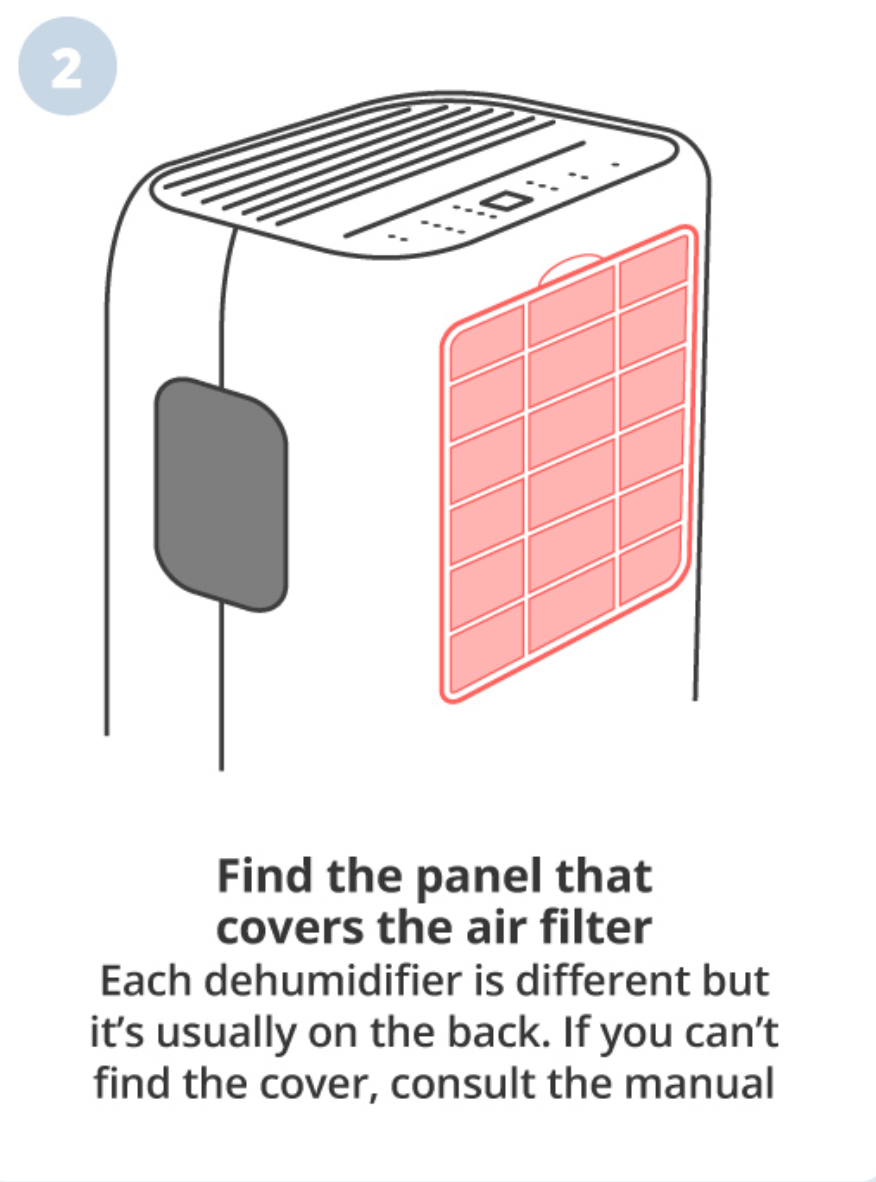Keeping your dehumidifier in top shape is vital to ensure its maximum efficiency and effectiveness. To make sure you’re getting the most out of your appliance, it’s important to regularly clean and maintain it. From removing built-up dirt and dust to preventing mold and mildew growth, this article will provide you with essential tips for keeping your dehumidifier running smoothly and efficiently. So, grab your cleaning supplies and get ready to give your dehumidifier the TLC it deserves!
1. Regular Cleaning
Regular cleaning is essential for the proper functioning and longevity of your dehumidifier. By following a simple cleaning routine, you can ensure that your dehumidifier operates efficiently and effectively. There are three main areas that need to be cleaned regularly: the exterior, the water tank, and the air filter.
1.1 Cleaning the Exterior
Start by unplugging your dehumidifier and wiping down the exterior with a damp cloth. Be sure to remove any dust, dirt, or grime that may have accumulated on the surface. Pay special attention to the vents and the control panel, as these areas can easily collect dust and debris.
1.2 Cleaning the Water Tank
The water tank of your dehumidifier should be emptied and cleaned regularly to prevent the growth of bacteria and mold. Begin by removing the tank from the unit and carefully emptying any remaining water. Then, wash the tank with mild soap and warm water. Rinse thoroughly and dry before reattaching it to the dehumidifier.
1.3 Cleaning the Air Filter
The air filter is responsible for trapping dust, allergens, and other airborne particles, so it’s crucial to keep it clean. Check the manufacturer’s instructions for guidance on how to remove and clean the air filter. In most cases, the filter can be washed with warm water and mild soap, and then left to air dry before reinserting it into the dehumidifier. Cleaning the air filter regularly not only ensures good air quality but also maintains the efficiency of the unit.
2. Deep Cleaning
While regular cleaning is effective in maintaining the cleanliness of your dehumidifier, deep cleaning is necessary to remove any stubborn dirt or buildup. Deep cleaning involves disassembling the dehumidifier and cleaning key components such as the fan, coils, and drainage system.
2.1 Disassembling the Dehumidifier
Before you begin the deep cleaning process, make sure to consult your dehumidifier’s manual for specific instructions on how to disassemble it. Once you’ve familiarized yourself with the process, carefully remove the necessary parts, such as the front grille and access panel, in order to access the internal components.
2.2 Cleaning the Fan and Coils
The fan and coils are crucial components responsible for extracting moisture from the air. Over time, they can accumulate dust and dirt, hindering the dehumidifier’s efficiency. Using a soft brush or a vacuum with a brush attachment, gently clean the fan blades to remove any debris. Next, clean the coils using a coil-cleaning brush or a cloth dampened with a coil cleaning solution. Be sure to follow the manufacturer’s instructions and avoid using harsh chemicals.
2.3 Cleaning the Drainage System
The drainage system of your dehumidifier is designed to remove the collected water. However, it can also become clogged with dirt and debris, leading to inefficient drainage or even leakage. To clean the drainage system, carefully remove the drain tube or drainage bucket and rinse it with warm water. Check for any blockages and remove them using a small brush or pipe cleaner. Thoroughly dry the drainage system before reassembling it.

3. Preventative Maintenance
In addition to regular and deep cleaning, there are several preventive maintenance tasks you can perform to keep your dehumidifier in optimal condition. These tasks help identify and address potential issues before they escalate and ensure the longevity of your appliance.
3.1 Check and Empty the Water Tank Regularly
Make it a habit to check the water tank regularly, especially during periods of high humidity. Emptying the tank prevents overflow and helps maintain the efficiency of your dehumidifier. Additionally, a clear water tank eliminates the risk of bacteria and mold growth.
3.2 Inspect and Clean the Air Filter
Inspecting and cleaning the air filter regularly not only ensures good air quality but also prevents the accumulation of dust and debris on other components. A clogged filter can strain the unit and reduce its efficiency. By keeping the air filter clean, you can minimize the workload on the dehumidifier and prolong its lifespan.
3.3 Ensure Proper Ventilation
Proper ventilation is crucial for the optimal performance of your dehumidifier. Ensure that the unit is not obstructed by any objects and that there is adequate airflow around it. Avoid placing the dehumidifier in tight spaces or against walls, as this can impede its ability to extract moisture effectively.
3.4 Clean the Surrounding Area
Regularly clean the area around your dehumidifier to prevent the accumulation of dust, dirt, and other particles. Dust and debris in the surroundings can find their way into the dehumidifier, reducing its efficiency and potentially causing damage to internal components.
3.5 Check for Mold and Mildew
Periodically inspect your dehumidifier for any signs of mold or mildew growth. Mold and mildew not only contribute to poor air quality but can also damage the internal components of the unit. If you notice any signs of mold or mildew, consult the manufacturer’s instructions for guidance on how to safely remove them.
3.6 Replace or Repair Faulty Components
Regularly check the condition of components such as the fan, coils, and drainage system. If you notice any signs of wear and tear or if a component is not functioning properly, consider replacing or repairing it promptly. Using a dehumidifier with faulty components can lead to decreased performance and potentially cause further damage to the unit.
4. Tips for Efficient Operation
To ensure efficient operation and maximum effectiveness, there are several tips you can follow when using your dehumidifier.
4.1 Set the Ideal Humidity Level
Most dehumidifiers allow you to set the desired humidity level. It’s recommended to set the humidity level between 30% and 50% for optimal comfort and energy efficiency. A humidity level below 30% may cause dryness, while a level above 50% can contribute to mold and mildew growth.
4.2 Position the Dehumidifier Correctly
Proper positioning of your dehumidifier is crucial for its effectiveness. Place the unit in a centralized location, preferably in a room where humidity is the highest or where moisture-related issues occur. Additionally, ensure that the dehumidifier is placed on a level surface to prevent any water leakage.
4.3 Avoid Obstructing Airflow
To allow for proper airflow, avoid placing objects near or on top of the dehumidifier. Obstructions can impede the airflow, resulting in reduced efficiency. Keep curtains, furniture, and other items clear of the unit to maximize its performance.
4.4 Schedule Regular Maintenance
Creating a maintenance schedule ensures that cleaning and maintenance tasks are consistently performed. Set reminders or mark your calendar to remind yourself when it’s time to clean the dehumidifier, inspect components, or replace filters. Regular maintenance will keep your dehumidifier running smoothly and extend its lifespan.
4.5 Monitor Energy Consumption
Keep an eye on your dehumidifier’s energy consumption to ensure it is operating efficiently. If you notice any significant increase in energy usage, it may indicate a problem with the unit. Additionally, consider using an energy-efficient dehumidifier model to minimize your energy consumption and reduce your carbon footprint.
4.6 Store Properly during Off-season
If you live in an area with seasonal humidity fluctuations or intend to store the dehumidifier for an extended period, it’s important to follow proper storage procedures. Clean the unit thoroughly, remove any excess water, and store it in a cool and dry place. Consult your dehumidifier’s manual for specific instructions on safe storage.

5. Troubleshooting
Even with meticulous cleaning and maintenance, issues may arise with your dehumidifier. Understanding common problems and their potential solutions can help you troubleshoot the unit effectively.
5.1 Dehumidifier Not Turning On
If your dehumidifier fails to turn on, check if it is properly plugged into a functioning power outlet. Ensure that the power cord is not damaged or frayed. If the power supply is not the issue, consult the manufacturer’s troubleshooting guide or consider seeking professional help.
5.2 Dehumidifier Not Removing Moisture
If your dehumidifier is not effectively removing moisture from the air, check if the humidity level is appropriately set and if the unit is sized correctly for the room. Also, ensure that the filters and coils are clean. If the issue persists, it may indicate a problem with the compressor or refrigerant levels, in which case professional assistance may be required.
5.3 Excessive Noise or Vibrations
Unusual noises or vibrations from your dehumidifier may indicate loose or damaged components. Check if all the parts, including the fan and coils, are properly secured. Clean any debris that may be causing the noise. If the issue persists, contact a professional for further diagnosis and repair.
5.4 Water Leakage
Water leakage from your dehumidifier can be a sign of a clogged drain tube or a faulty pump. Check the drainage system for any blockages and ensure that the drain tube is properly attached. If the problem continues, consult a professional technician to identify and rectify the issue.
5.5 Frost Build-up on Coils
Frost build-up on the coils indicates a problem with the defrost mechanism or low refrigerant levels. Turn off the dehumidifier and allow the frost to melt naturally. Check if the air filter is clean, as a clogged filter can contribute to frost build-up. If the issue persists, contact a professional for assistance.
5.6 Strange Odors
If your dehumidifier emits strange odors, it may be an indication of mold or mildew growth. Inspect the unit and thoroughly clean all components, including the air filter. If the odor persists, it may be necessary to replace the filter or seek professional cleaning to eliminate the odor-causing contaminants.
6. Professional Cleaning and Servicing
While regular cleaning and maintenance can help keep your dehumidifier in good condition, professional cleaning and servicing provide additional benefits.
6.1 Importance of Professional Cleaning
Professional cleaning ensures a thorough removal of dirt, dust, and mold that may have accumulated in hard-to-reach areas. Trained technicians have the expertise and specialized tools to clean and disinfect the internal components of your dehumidifier effectively.
6.2 When to Seek Professional Help
If you encounter persistent issues with your dehumidifier or if you’re unsure about how to address a problem, it’s advisable to seek professional help. Professional technicians can diagnose and repair complex issues, ensuring the proper functioning and longevity of your dehumidifier.
6.3 Choosing a Reliable Service Provider
When selecting a professional service provider for your dehumidifier, it’s important to choose a reliable and reputable company. Look for service providers with experience in servicing dehumidifiers and check for customer reviews and testimonials. Additionally, ensure that the company is licensed and insured for your protection.

7. Safety Precautions
When cleaning and maintaining your dehumidifier, it’s essential to prioritize safety. Keep these precautions in mind to prevent accidents or damage to yourself or your appliance.
7.1 Unplug Before Cleaning
Before conducting any cleaning or maintenance tasks, always remember to unplug your dehumidifier from the power source. This ensures your safety and prevents any electrical accidents.
7.2 Do Not Use Harsh Chemicals
Avoid using harsh chemicals or abrasives when cleaning your dehumidifier, as they can damage the internal components. Refer to the manufacturer’s instructions for recommended cleaning solutions and materials.
7.3 Avoid Contact with Electrical Parts
When disassembling or cleaning your dehumidifier, be cautious around electrical parts and wiring. If you’re unsure of how to safely handle electrical components, seek professional assistance.
7.4 Handle Water Properly
When draining the water tank or working with the drainage system, take care not to spill water onto electrical parts. Thoroughly dry any damp components before reassembling the dehumidifier to prevent electrical shorts or damage.
7.5 Keep Children and Pets Away
During the cleaning and maintenance process, ensure that children and pets are kept away from the dehumidifier. This prevents accidents or injuries and ensures your own safety as you work.
8. Extending the Lifespan
By following proper cleaning and maintenance practices, you can significantly extend the lifespan of your dehumidifier. Consider these tips to maximize the durability of your appliance.
8.1 Regular Maintenance
Regularly cleaning and maintaining your dehumidifier as outlined in this article will help prevent issues and ensure its efficient performance. Stick to a scheduled cleaning routine and promptly address any problems that arise.
8.2 Proper Storage
If you plan to store your dehumidifier during off-seasons or periods of extended non-use, ensure that it is thoroughly cleaned and properly stored. Clean all components, remove any excess water, and store the unit in a cool and dry place to prevent damage.
8.3 Quality Components
Invest in a dehumidifier with quality components that are built to last. While initially more expensive, a high-quality unit is likely to require fewer repairs and replacements over time, saving you money in the long run.
8.4 Using the Dehumidifier Correctly
Follow the manufacturer’s instructions and guidelines for using your dehumidifier correctly. Avoid using the unit in extreme temperatures or high humidity environments outside of its designated range. Proper usage ensures optimal performance and prolongs the lifespan of the appliance.

9. Benefits of Cleaning and Maintenance
Regular cleaning and maintenance of your dehumidifier offer several benefits that can improve your indoor environment and save you money in the long run.
9.1 Improved Air Quality
By keeping your dehumidifier clean, you can effectively remove allergens, dust, and pollutants from the air. This leads to improved air quality, reduces the risk of respiratory issues, and ensures a healthier living environment for you and your family.
9.2 Increased Energy Efficiency
A well-maintained dehumidifier operates more efficiently, reducing energy consumption and associated costs. By keeping the coils clean, the fan functioning properly, and the filters clear, you allow the appliance to work at its highest efficiency, saving both energy and money.
9.3 Prevention of Mold and Mildew
A properly maintained dehumidifier helps prevent mold and mildew growth in your home. By controlling the humidity levels and cleaning the unit regularly, you eliminate the conditions that promote mold and mildew, reducing the risk of respiratory issues and property damage.
9.4 Prolonged Lifespan
Cleaning and maintaining your dehumidifier consistently can significantly extend its lifespan. Regular upkeep prevents the accumulation of dirt and debris, reducing strain on the components and ensuring that the unit functions optimally for a longer period.
9.5 Cost Savings
Proper cleaning and maintenance not only save on energy costs but also reduce the frequency of repairs and replacements. By investing time in routine cleaning and inspections, you can minimize expenses associated with malfunctioning or inefficient dehumidifiers.
10. Conclusion
Cleaning and maintaining your dehumidifier is essential for its efficient operation, longevity, and the overall comfort of your indoor environment. By following a regular cleaning routine, performing deep cleaning when necessary, practicing preventive maintenance, and seeking professional assistance when needed, you can ensure the optimal performance of your dehumidifier for years to come. Not only will you enjoy improved air quality and energy efficiency, but you’ll also save money in the long run. Prioritize the well-being of your dehumidifier by implementing the tips and techniques outlined in this article, and enjoy the benefits of a clean and efficient appliance.


Hi, I’m Cohan, the author behind Your Dehumidifier Guide, a website dedicated to helping you create a healthier and more comfortable living environment. With a tagline of “Breathe Easy, Live Better,” my ultimate goal is to provide you with the best dehumidification solutions for your home. Whether you’re looking for the perfect dehumidifier for your bathroom, small room, or basement, I’ve got you covered. Through in-depth reviews and comprehensive buying guides, I aim to equip you with the knowledge to tackle high humidity levels, prevent mold growth, and improve your indoor air quality. Trust me to be your ultimate guide in the world of dehumidifiers.